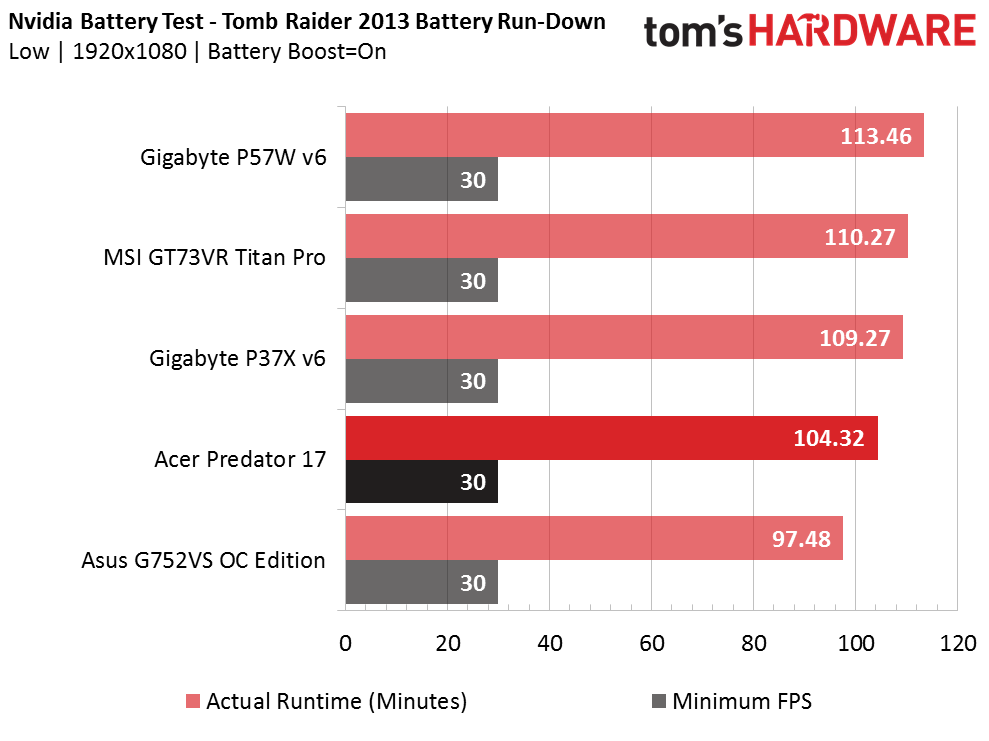Acer Predator 17 Gaming Laptop Review
Will the Acer Predator 17 catch its prey? We put this gaming laptop through its paces.
Why you can trust Tom's Hardware
Battery, Thermal, And Display Testing
Battery Test - Tomb Raider 2013 Battery Rundown
To test battery life, we set each laptop’s battery profile to Balanced while running Tomb Raider’s built-in benchmark at the lowest detail preset. The frame rate is locked at 30 FPS through GeForce Experience’s Battery Boost to limit the strain on the battery. Meanwhile, a script running in the background monitors and time stamps the system’s battery percentage. The laptops are set to hibernate once battery levels reach 5%.
The Acer Predator 17 proves itself to be a powerful contender, but its power comes a cost. The Acer’s battery doesn’t last as long as the competition, even with its performance limited to 30 FPS. Still, the Predator 15 delivers nearly 1 hour and 45 minutes of game time, which is respectable. Competition is tight, however, with even a few of minutes meaning the difference between first and third place.
Thermal Testing
For our thermal testing, we used our Optris PI 640 infrared camera to measure the laptop’s thermals. For more information about how we test, be sure to check out our Measurement Science article. We would have liked to test the Predator 17's thermal performance both with and without the hot-swap bay fan, but unfortunately the fan falls out of place without the system's bottom panel attached.
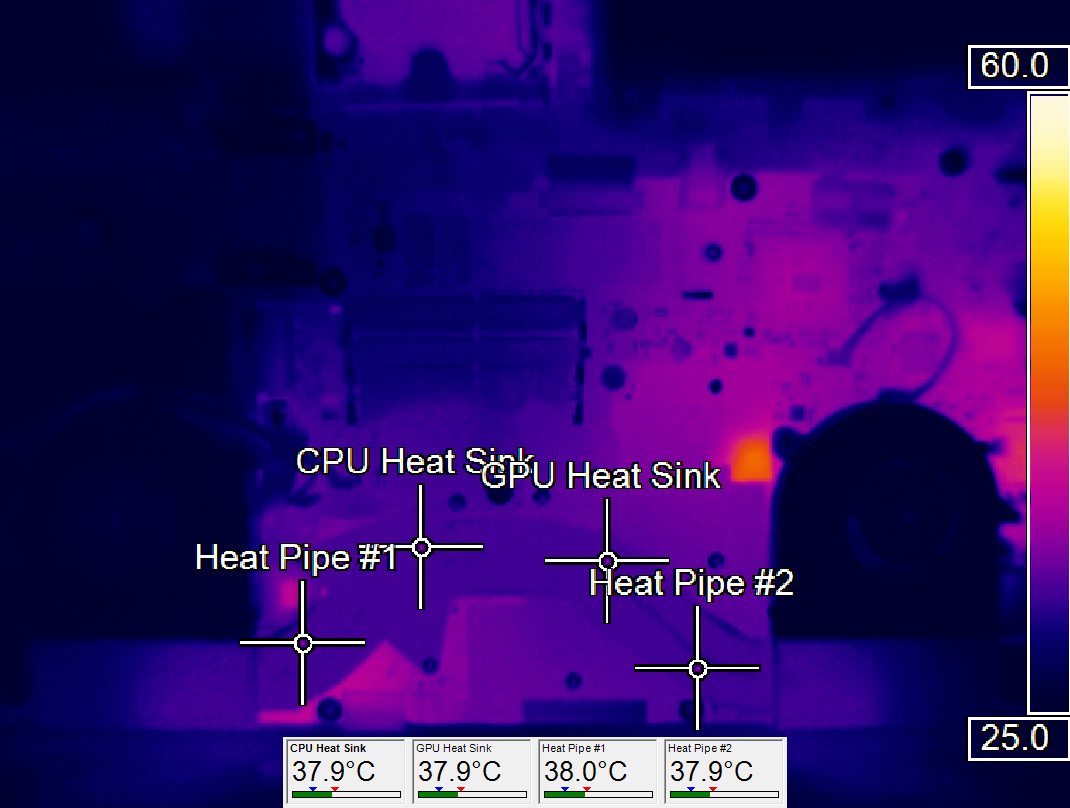
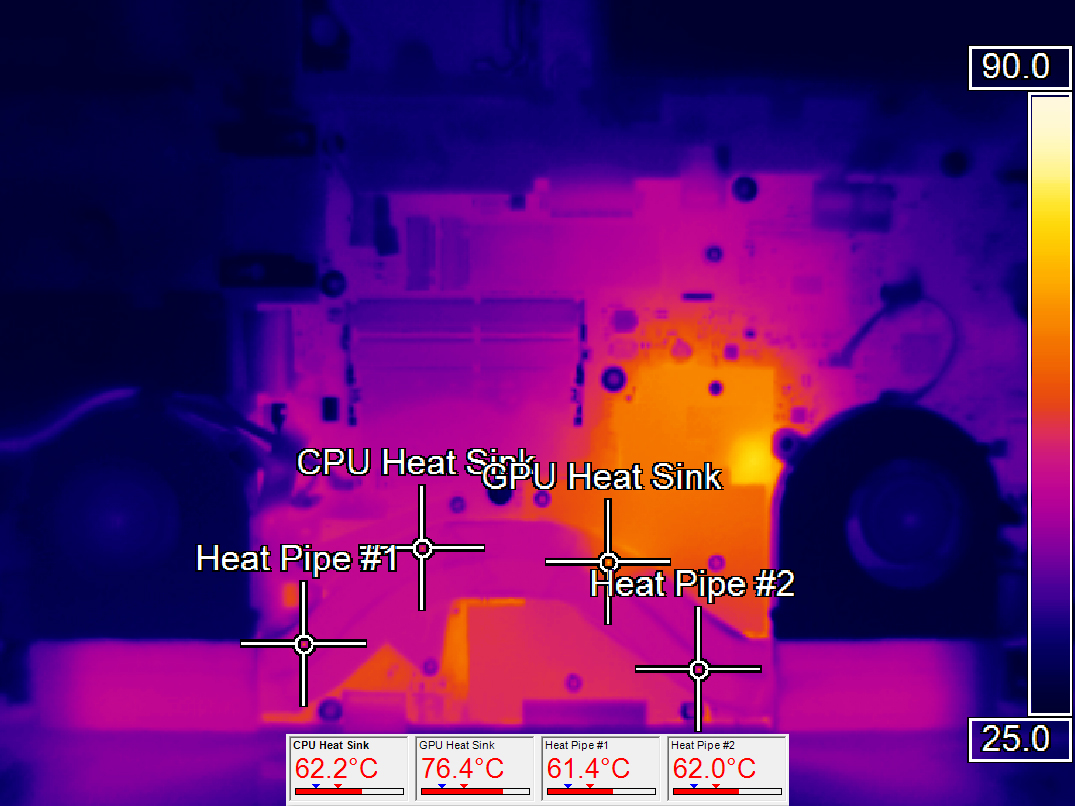
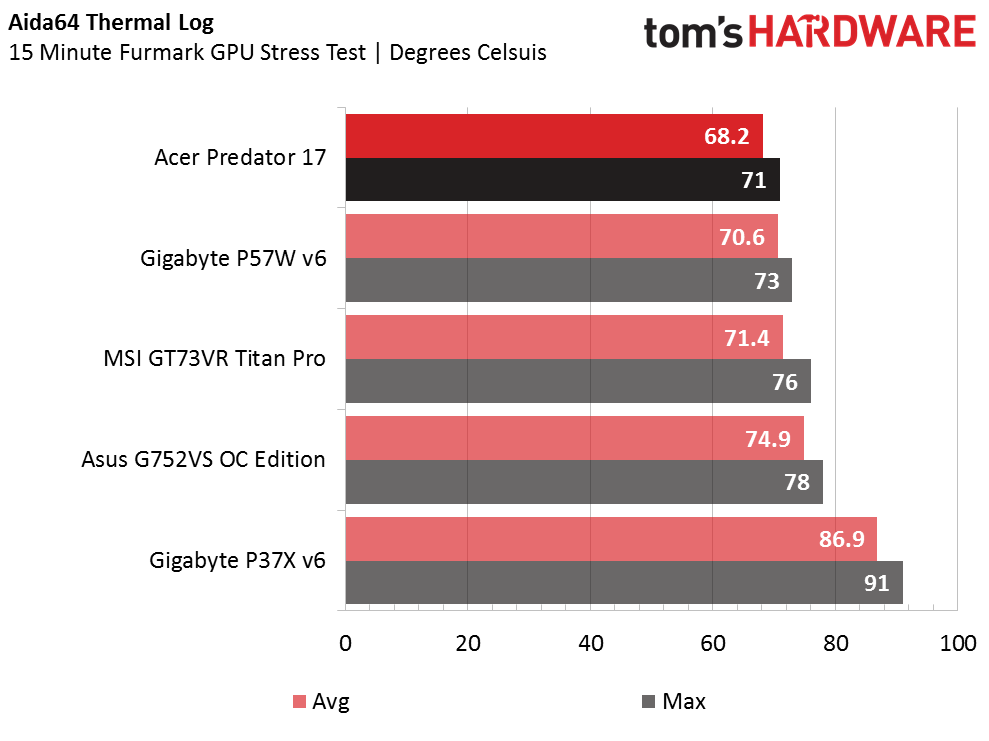
The Predator 17’s cooling solution maintains a cool 38°C when the system is idling. After ramping up the heat with a 15 minute Furmark stress test, the Optris captures temperatures hovering around 62°C in the CPU heatsink and the two heat pipes, but the GPU heatsink experiences a much warmer 76°C, which is still within expected limits. Aida64 logs an average GPU diode temperature of 68.2°C, which maxes out at 71°C, making it the coolest system in our roundup. And that's without the extra fan.
Display Testing
We used the SpectraCal C6 Colorimeter to measure the Acer Predator 17 display. Be sure to check out our Display Testing Explained article for a full description of our test methodology.
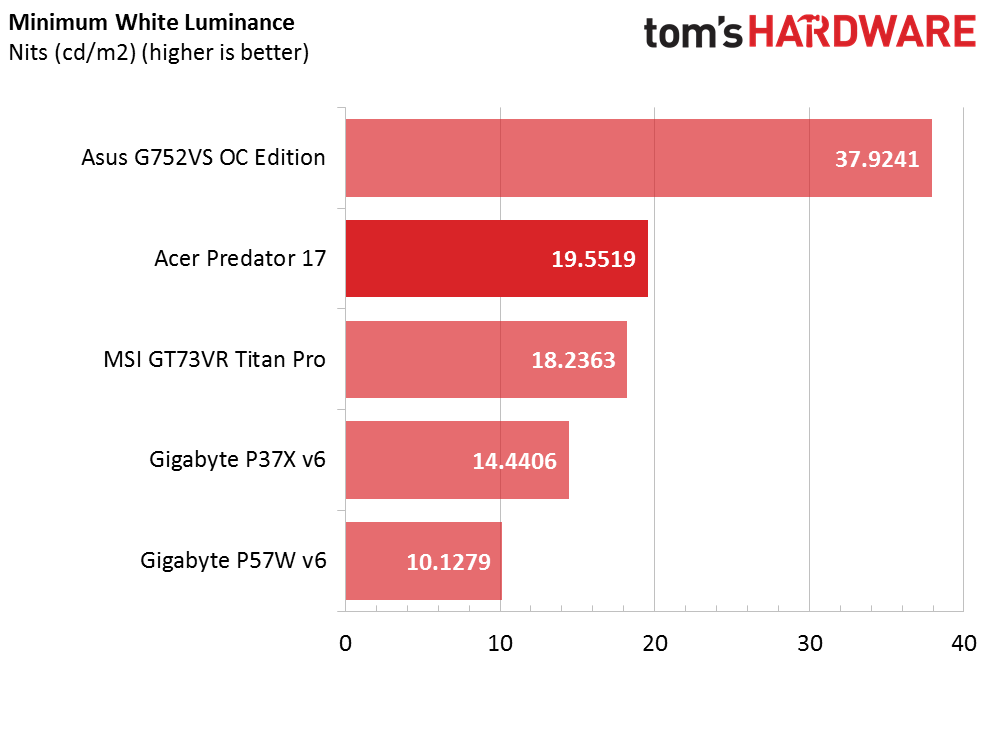

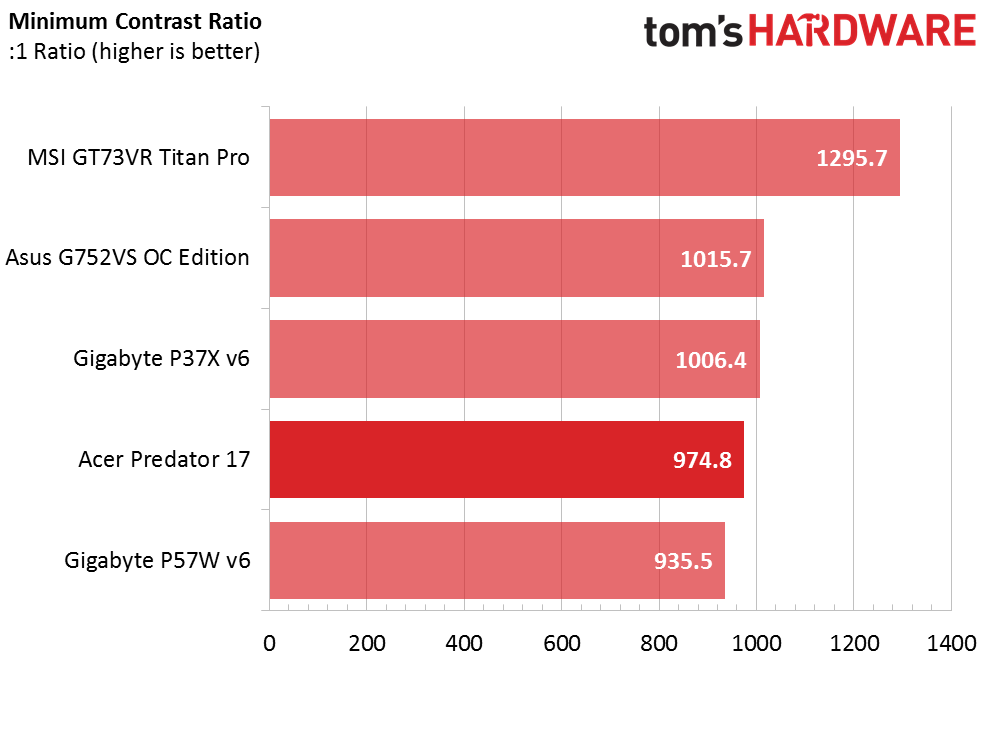
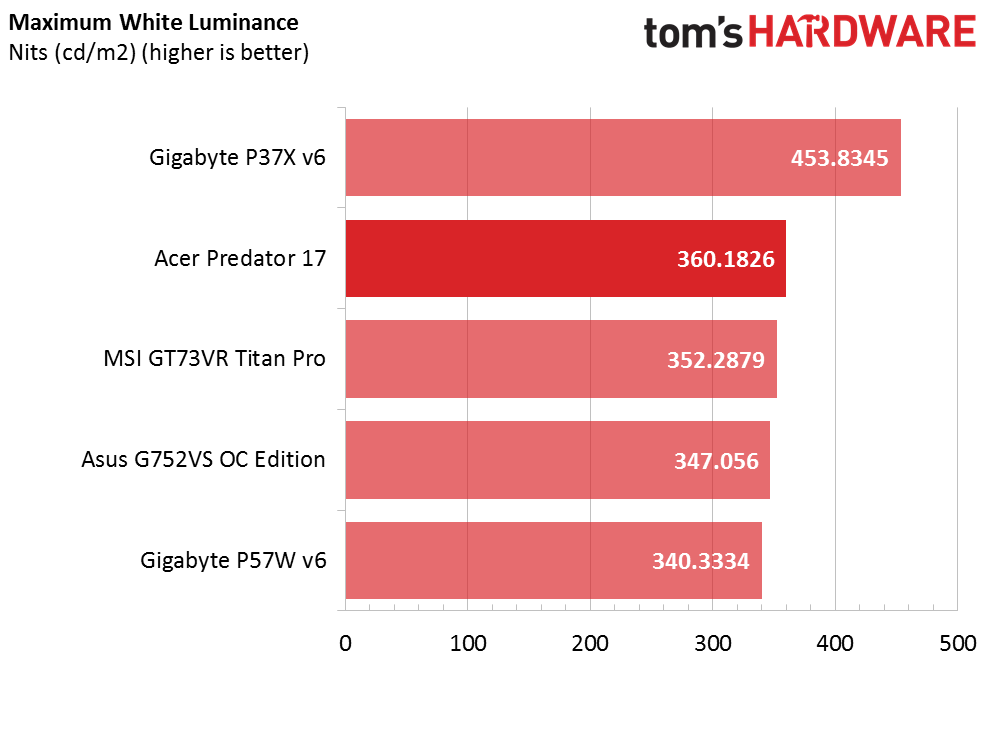
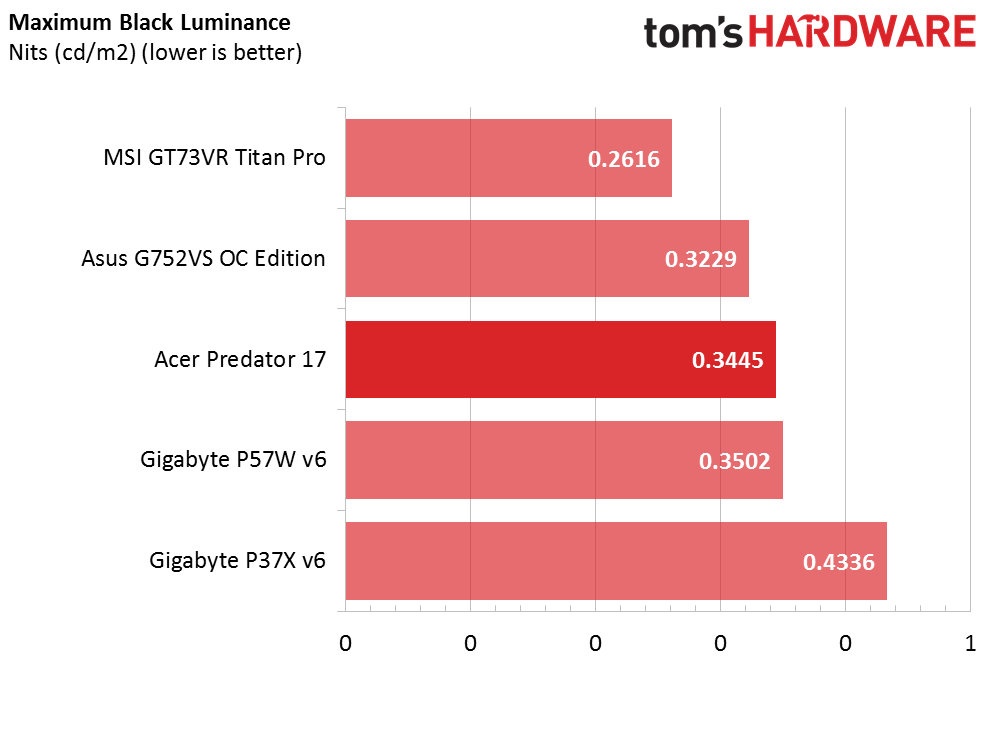
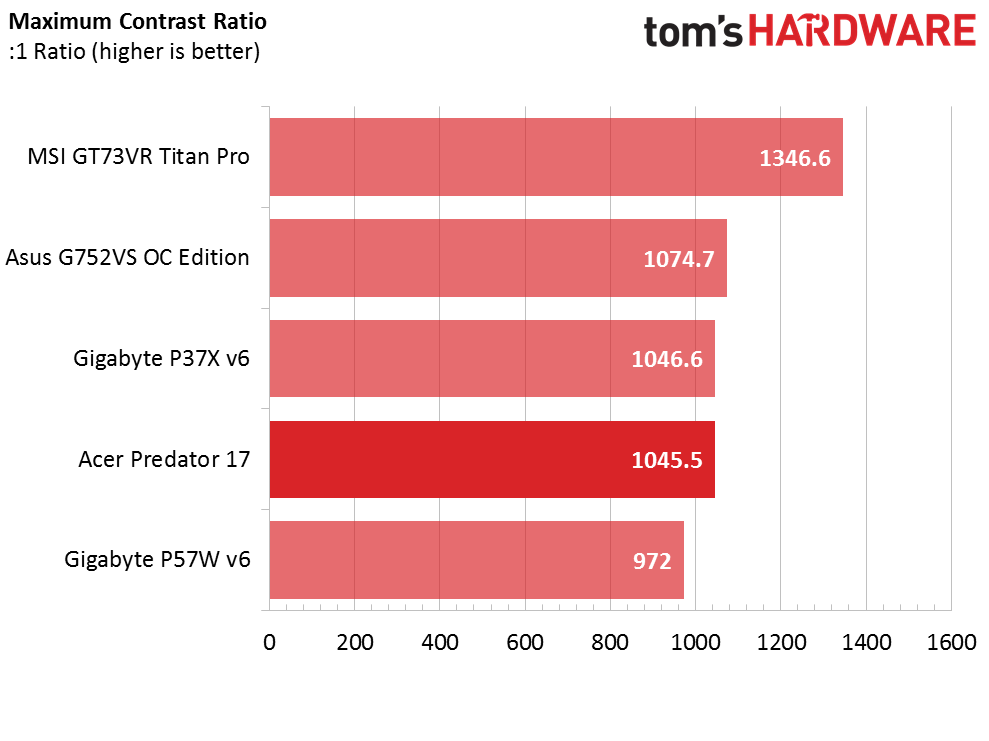
The Predator’s display has good contrast at lowest brightness and even better contrast at maximum brightness. The minimum white luminance is decent, but the contrast would be improved significantly if the minimum black luminance were lower. The maximum black luminance could be lower as well, but this is compensated for partially by the high maximum white luminance. None of the laptops in this grouping quite compare to the Titan Pro’s contrast ratios, however.
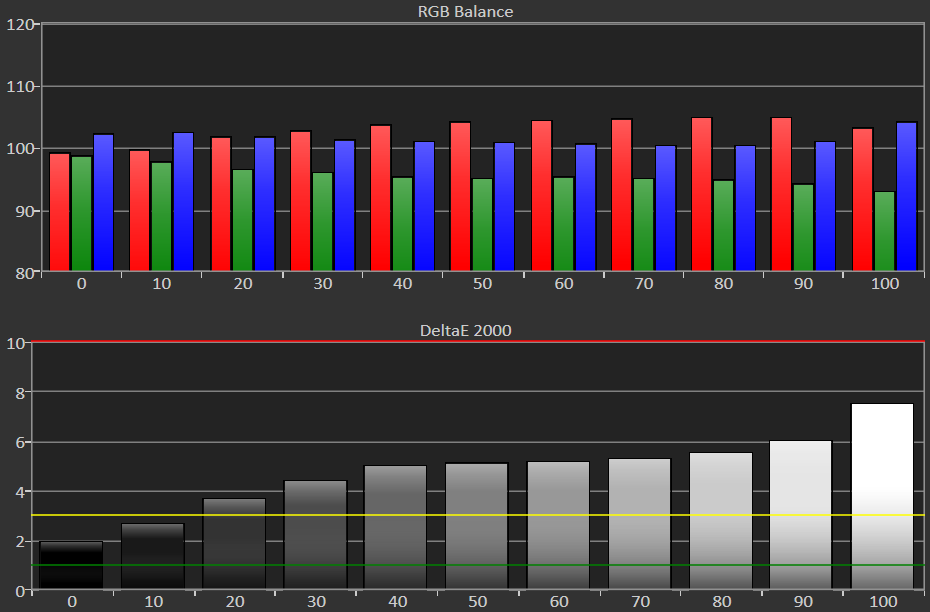

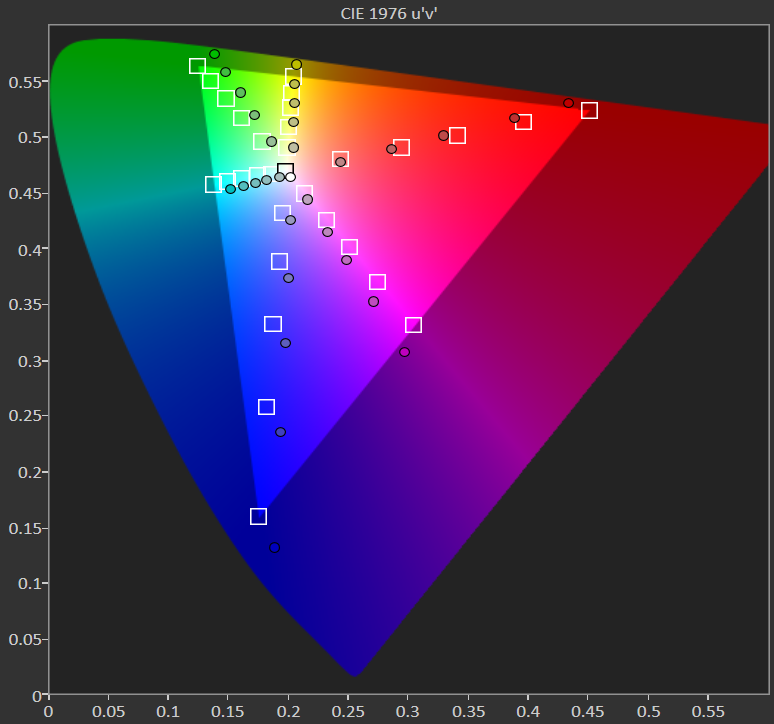


The display’s RGB levels start off slightly unbalanced at minimum brightness because the blue level is slightly higher than the red and green levels. The blue levels normalize as brightness is increased, but red and green levels significantly increase and decrease, respectively.
Get Tom's Hardware's best news and in-depth reviews, straight to your inbox.

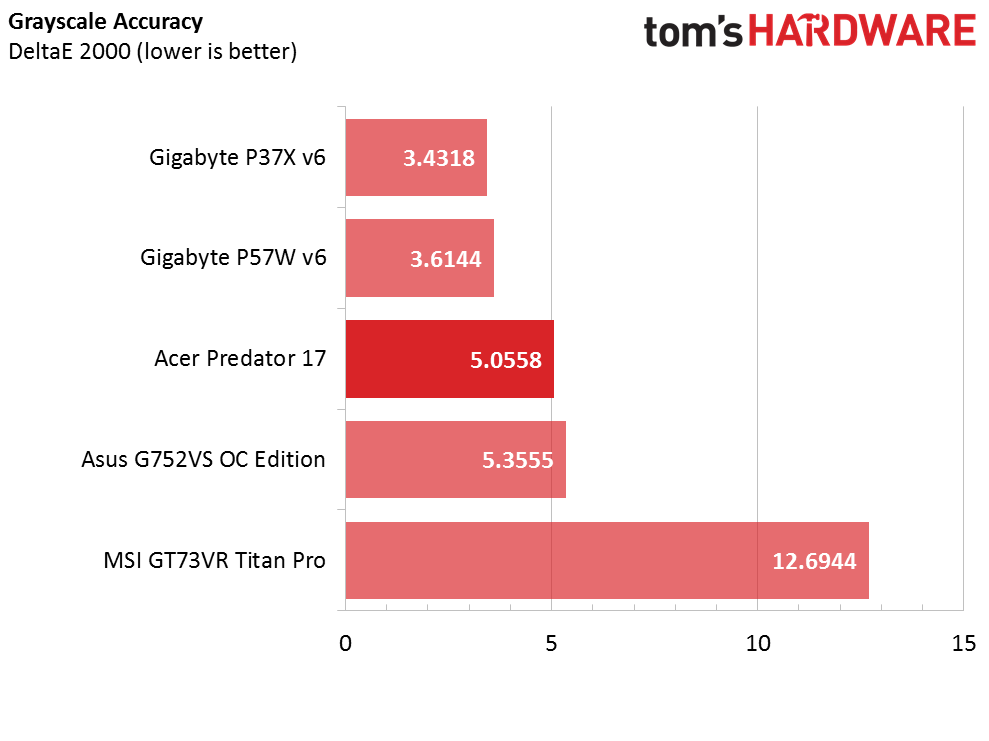
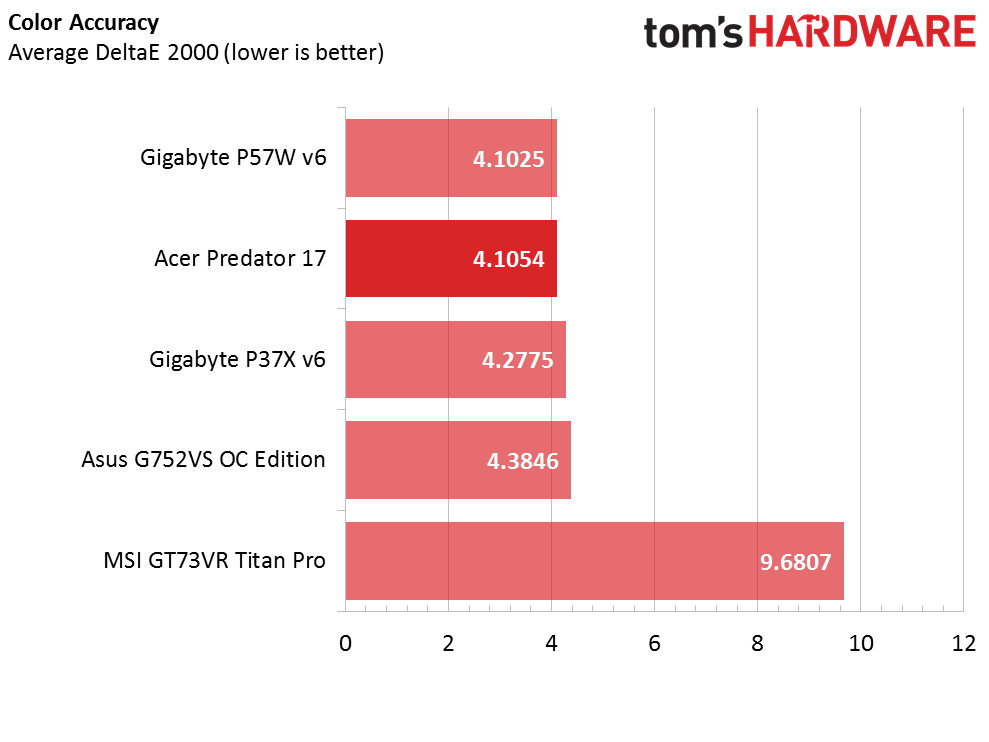
The Acer’s average gamma value sits at a rather high 2.3. Our CalMAN gamma point chart illustrate the gamma levels hovering close to 2.2 between 0-80% brightness, but experiences a large spike at 90% brightness, which raises the average considerably. As for DeltaE 2000, the Predator 17’s display exhibits a low color error value, matching that of the well-received displays on the previously tested Gigabyte models. However, the grayscale accuracy isn’t up to par with Gigabyte’s offerings.
Current page: Battery, Thermal, And Display Testing
Prev Page Gaming Benchmarks Next Page Price Analysis And Conclusion